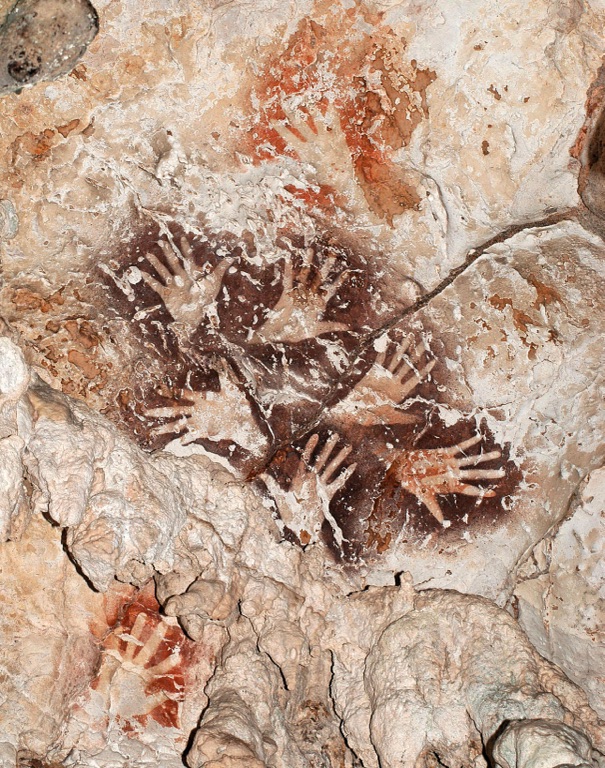Lubang Jeriji Saléh is a limestone cave located in the remote rainforests of East Kalimantan, Borneo, Indonesia. It is renowned for its ancient rock art, including one of the oldest known figurative paintings in the world. The cave’s artwork provides invaluable insights into the prehistoric culture and life of early humans in the region. The discovery of the cave paintings has sparked significant interest in the archaeological community, offering a window into the past that continues to be studied and interpreted.
Get your dose of History via Email
Historical Background of Lubang Jeriji Saléh
The Lubang Jeriji Saléh cave was brought to wider attention in the late 20th century. Researchers stumbled upon the cave’s treasures while exploring the dense jungles of Borneo. The paintings, including the iconic image of a wild cattle-like beast, are believed to be up to 40,000 years old. This discovery was made by a team led by French archaeologist Luc-Henri Fage and Indonesian researcher Pindi Setiawan.
Local tribes, such as the Dayak people, have known about the cave for generations. However, it was not until recent decades that the site gained international recognition. The creators of the art remain a mystery, but they were likely early inhabitants of the island. These ancient artists left behind a legacy that outlived their own civilizations.
Over time, the cave has seen various inhabitants and uses. It has served as a shelter and a canvas for prehistoric people. The cave has not been the scene of any known historically significant events in modern times. Yet, its ancient artwork provides a connection to the region’s distant past.
The paintings have withstood the test of time, surviving in a region that has seen many changes. The cave’s remote location has helped preserve the artwork from human interference. This has allowed for a relatively undisturbed archaeological site, rare for such ancient works.
While the cave itself has not been built or created in the traditional sense, its natural formation has provided a perfect backdrop for the prehistoric artists. The cave’s walls have become a canvas that has captured the imagination of people thousands of years later.
About Lubang Jeriji Saléh
Lubang Jeriji Saléh is a prehistoric site of significant archaeological importance. The cave’s interior is adorned with some of the oldest known figurative paintings. These include hand stencils and depictions of animals, such as the Bornean banteng.
The artwork was created using red and mulberry-colored pigments. These pigments have endured over millennia, a testament to the early artists’ skills. The methods used to apply the pigments to the cave walls are still a subject of study.
The cave’s structure is typical of karst formations, with its limestone composition providing a durable surface for the paintings. The natural chambers and recesses of the cave have protected the artwork from environmental elements.
Architectural highlights are not applicable to Lubang Jeriji Saléh, as it is a natural cave rather than a man-made structure. However, the way the artwork is integrated into the cave’s features is noteworthy. The artists utilized the contours and shapes of the walls to enhance their depictions.
The cave’s location in a remote area has limited the impact of modern development. This has helped preserve the site, although conservation efforts are necessary to maintain its integrity for future generations.
Theories and Interpretations
The Lubang Jeriji Saléh cave paintings have sparked various theories about their purpose and creation. Some researchers suggest the artwork represents spiritual beliefs or hunting practices of the time.
The depiction of animals, particularly the Bornean banteng, indicates the importance of these creatures in the lives of the artists. The paintings may have been part of rituals or storytelling traditions.
Mysteries surround the cave, such as the identity of the artists and the exact reasons for the creation of the paintings. The lack of written records from the time leaves much to interpretation.
Historians and archaeologists have matched the style and subject matter of the paintings to other prehistoric art. This helps to place Lubang Jeriji Saléh within a broader context of early human culture.
Dating of the paintings has been carried out using uranium-series analysis. This method has provided estimates that place some of the artwork at around 40,000 years old, making it among the oldest known figurative art.
At a glance
Country: Indonesia
Civilization: Unknown prehistoric culture
Age: Approximately 40,000 years old

